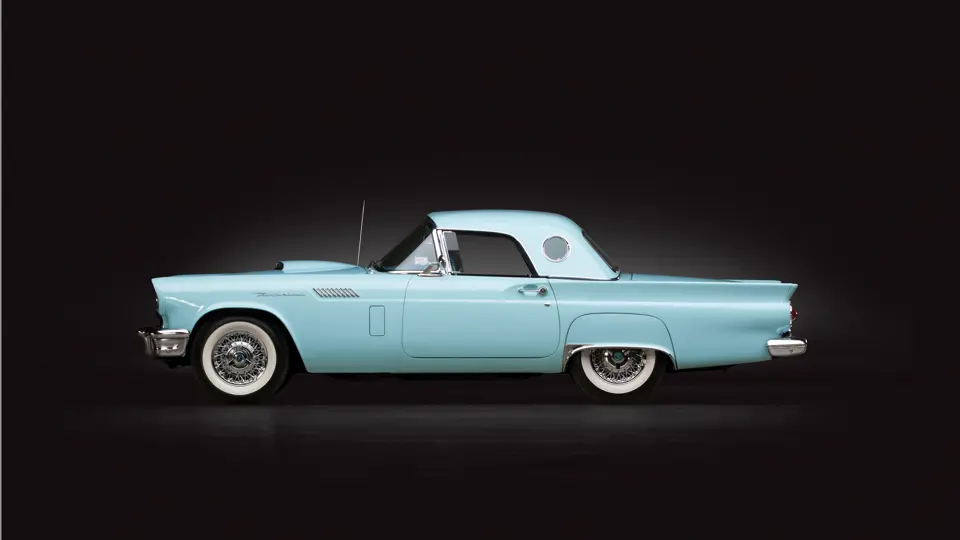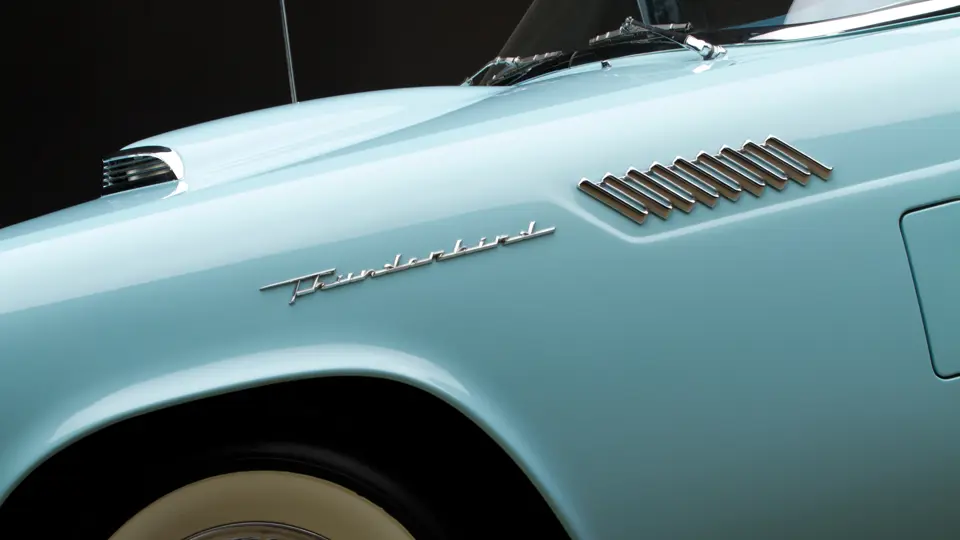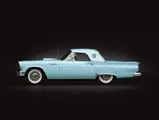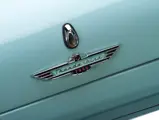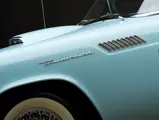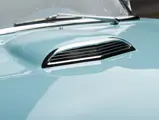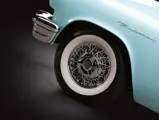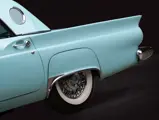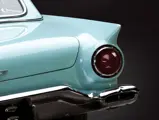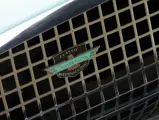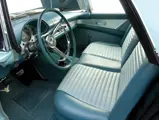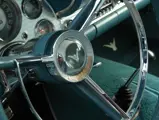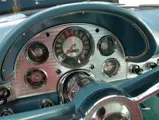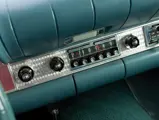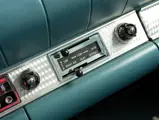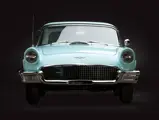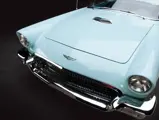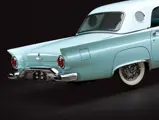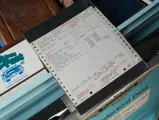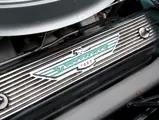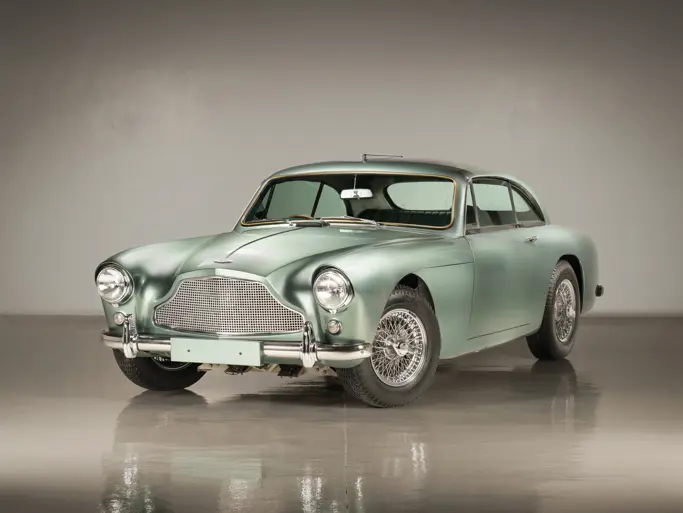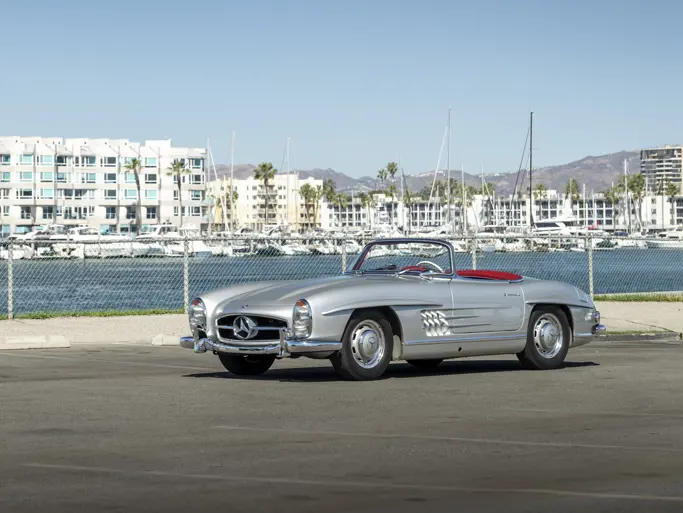270 bhp, 312 cu. in. V-8 engine with dual four-barrel carburetors, three-speed manual transmission with overdrive, independent front suspension with unequal length A-arms and coil springs, live rear axle with semi-elliptic leaf springs, and four-wheel power-assisted hydraulic drum brakes. Wheelbase: 102 in.
Two years after Chevrolet began deliveries of its hot Corvette Motorama show car, Ford responded with the 1955 Thunderbird. Unlike Chevy’s roadster, the Thunderbird was a sporty convertible used for cruising and personal transportation, with no pretensions of being a sports car, at first.
In 1957, Ford Thunderbird buyers could choose from four V-8 engines, beginning with a standard 292-cubic inch motor that could produce 212 horsepower and ending at the top of the heap with a supercharged version that churned out a whopping 300 horses. Few enthusiasts were fortunate enough to obtain the rare 270-horsepower, 312-cubic inch V-8 engine option, which featured a pair of 4000-Series Holley four-barrel carburetors. The Thunderbirds that were fitted with these E-Code engines have been commonly referred to as “E-Birds.”
This factory Starmist Blue Thunderbird, which was delivered new in February 1957 to the LaSalle Motor Company of Illinois, is one of these highly desirable E-Code models. It not only has the dual-quad powerplant, but according to the original build sheet, it also arrived with a hardtop, a three-speed manual transmission with overdrive, an engine dress-up kit, tinted glass, a signal-seeking radio, a heater with defrost, and rear fender shields. Other important highlights on the car include the beautiful two-tone blue upholstery, a navy blue soft-top, Sure Swift power brakes, Master Guide power steering, a windshield washer, and Kelsey-Hayes wire wheels. It is known to be one of 1,499 built with the E-Code 312 engine, and it is also one of only 275 with the overdrive transmission.
The restoration of this exceptional Ford was completed in 2001, and the results garnered four Gold Concours awards. Today, it shows an appropriate light patina, but it clearly has been very well preserved and maintained where necessary. This example has been part of the collection for more than a decade, and it has played the most important role of a rare and important Thunderbird.
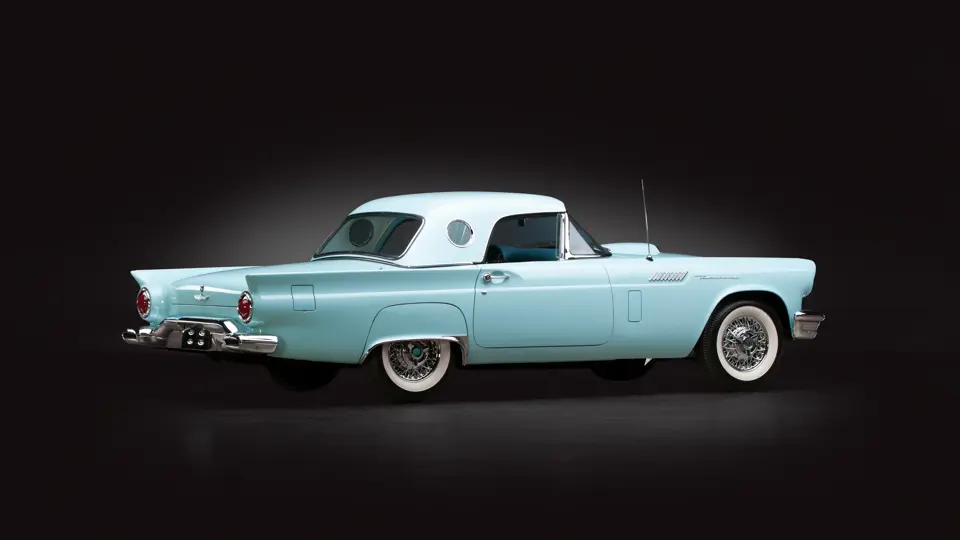
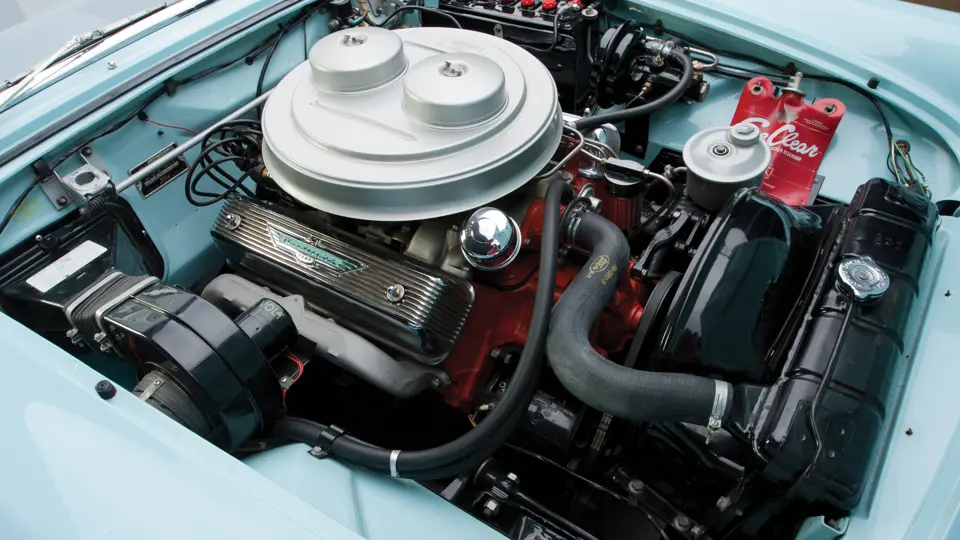


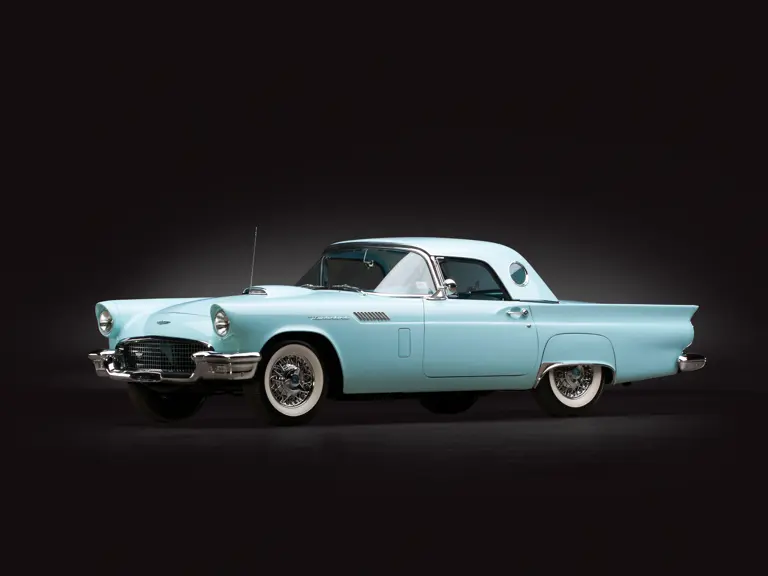
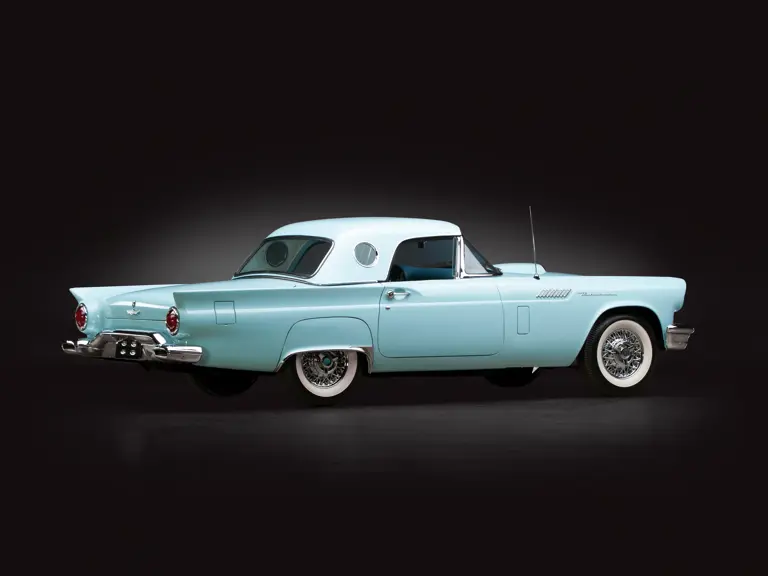
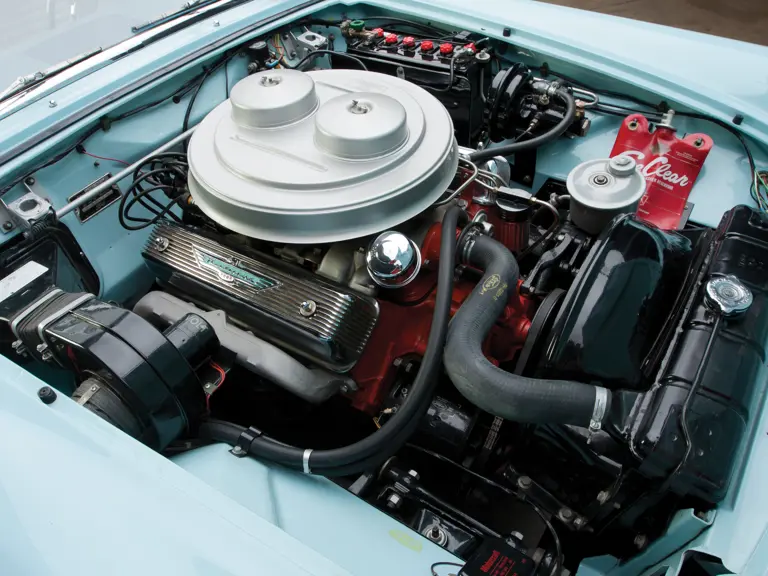
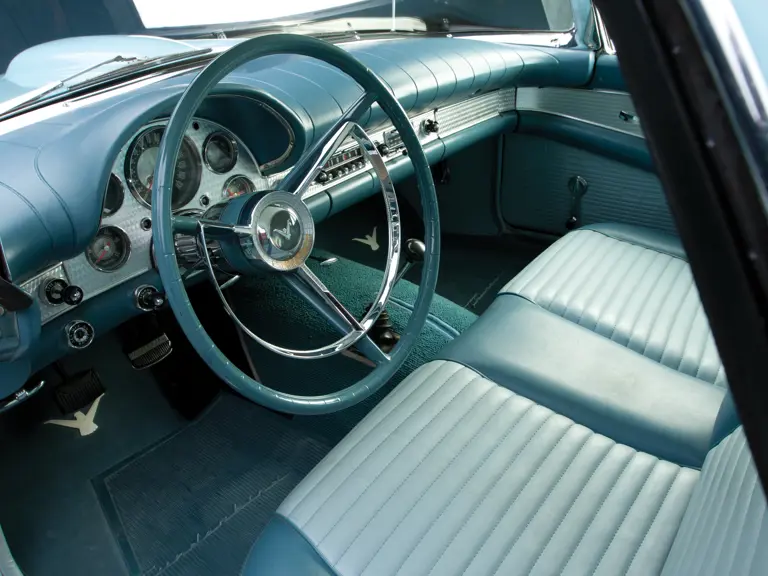
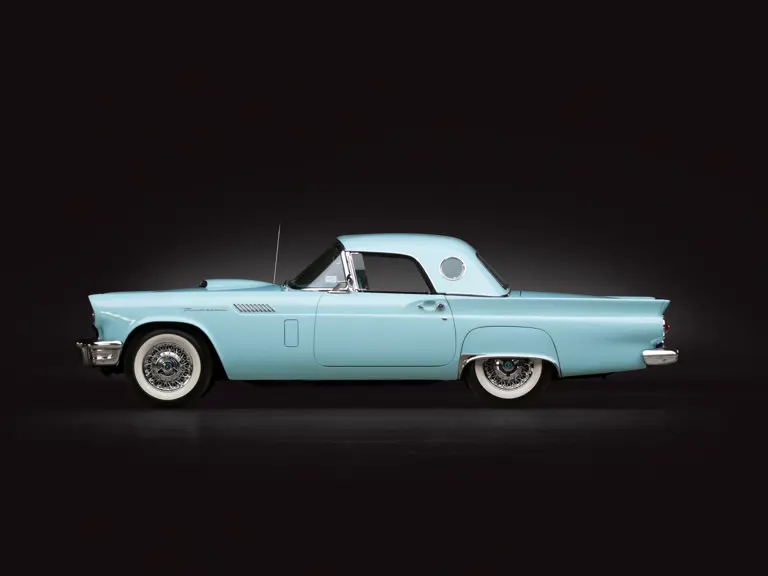

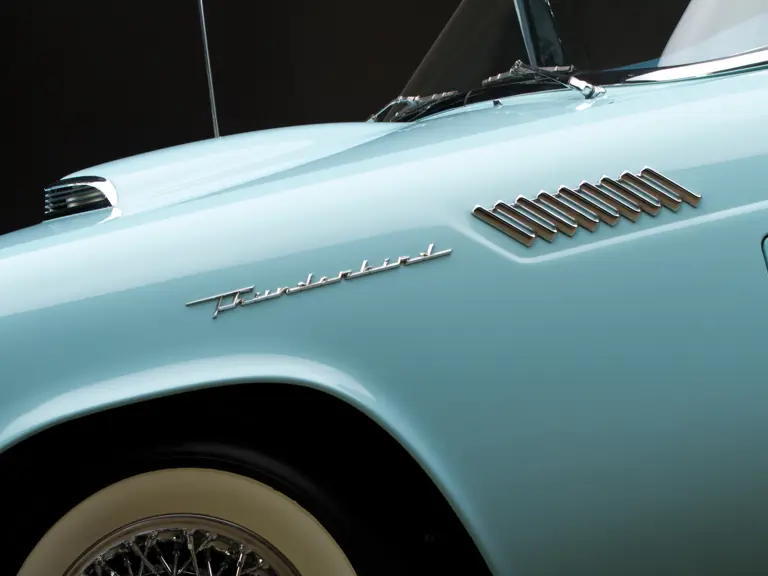
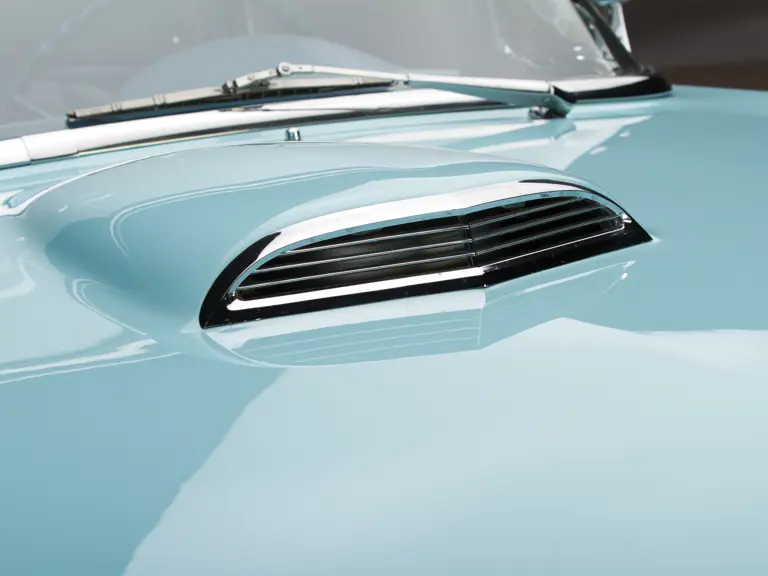
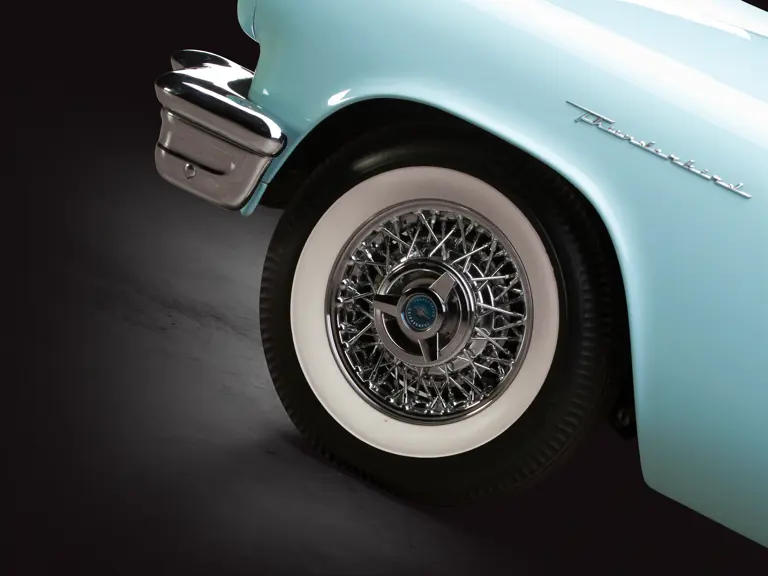
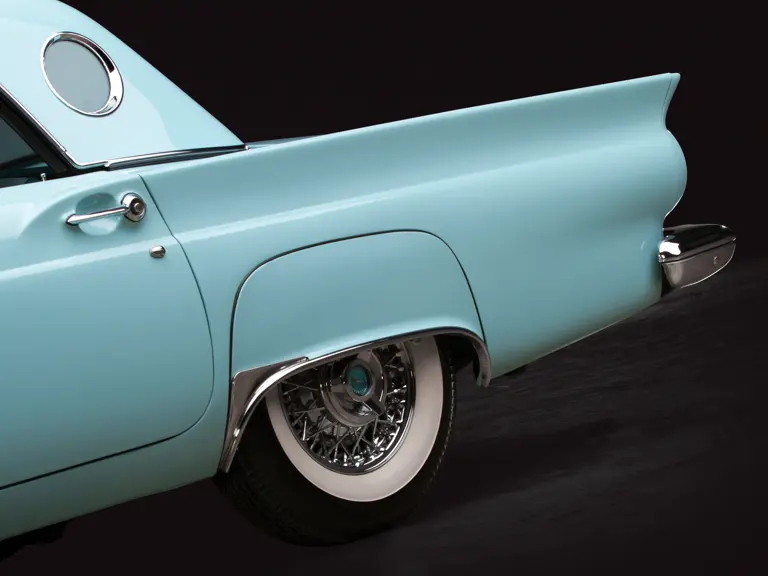
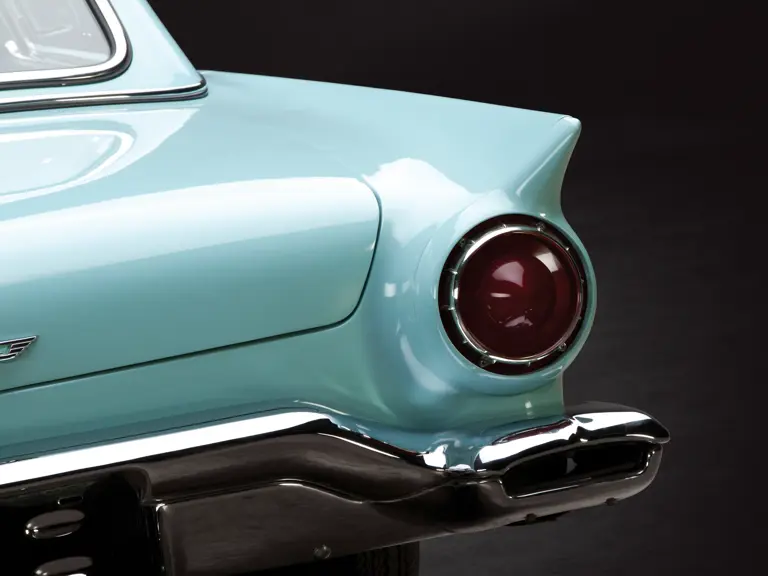
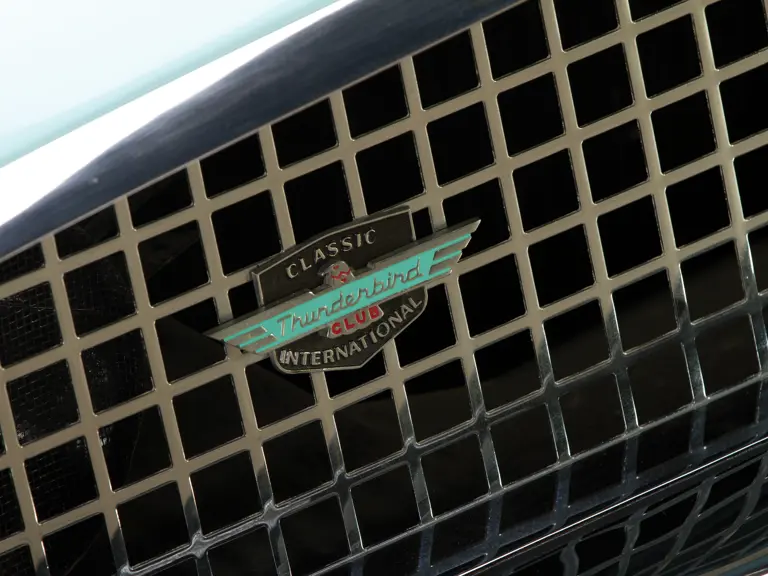

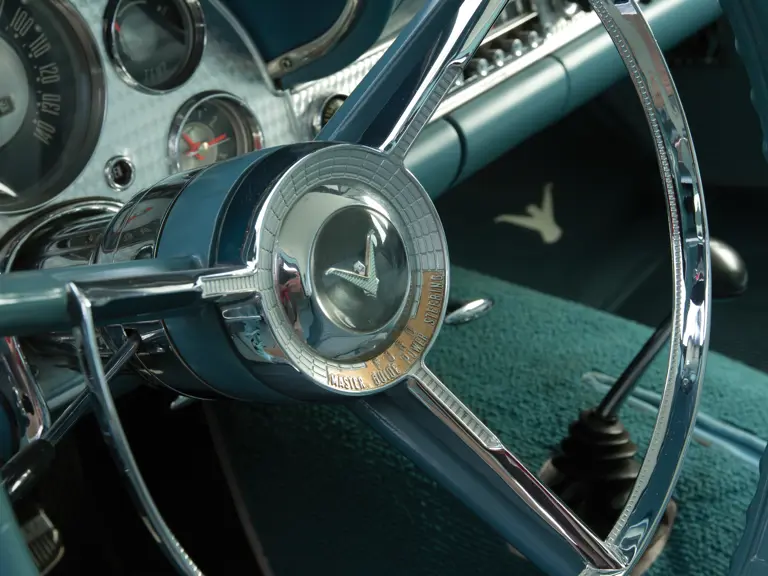
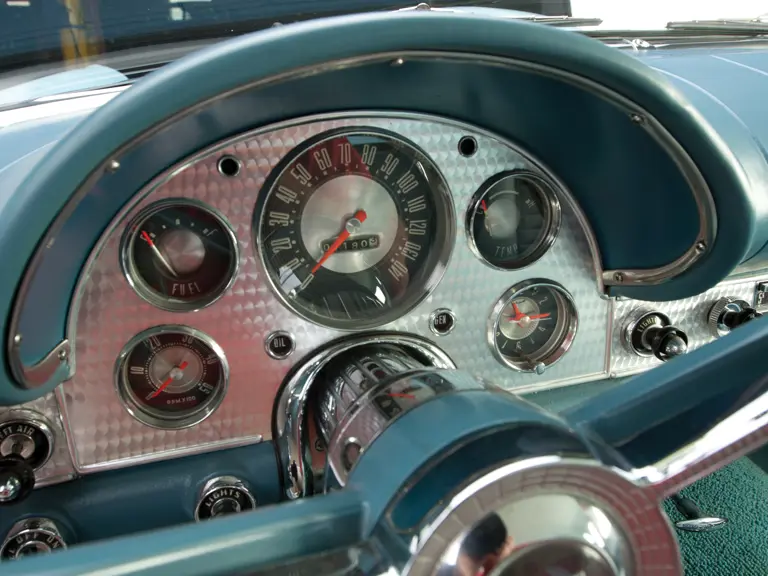
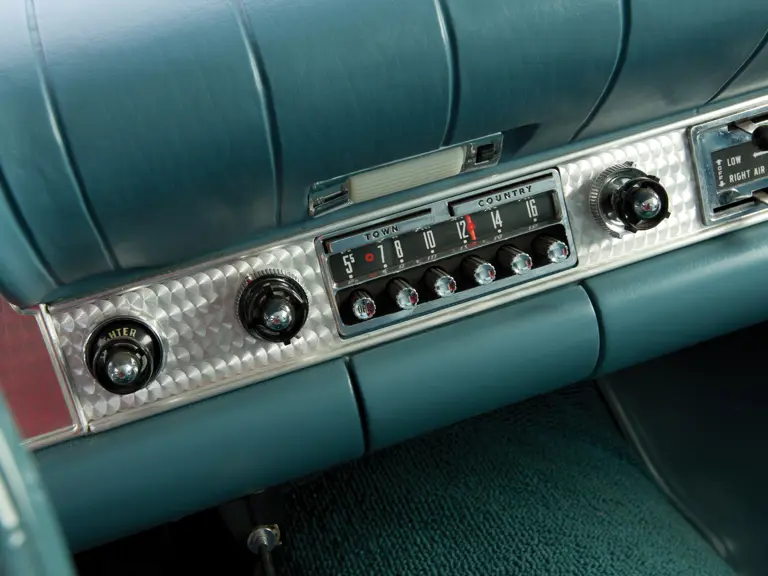
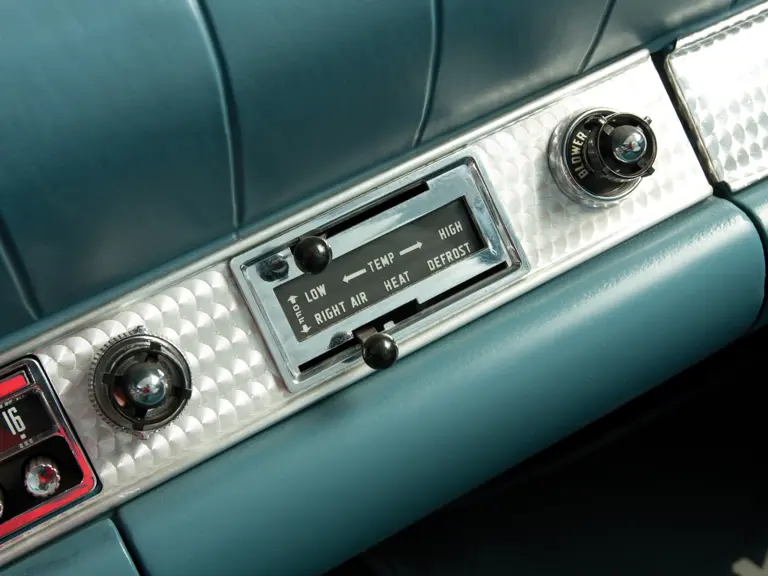

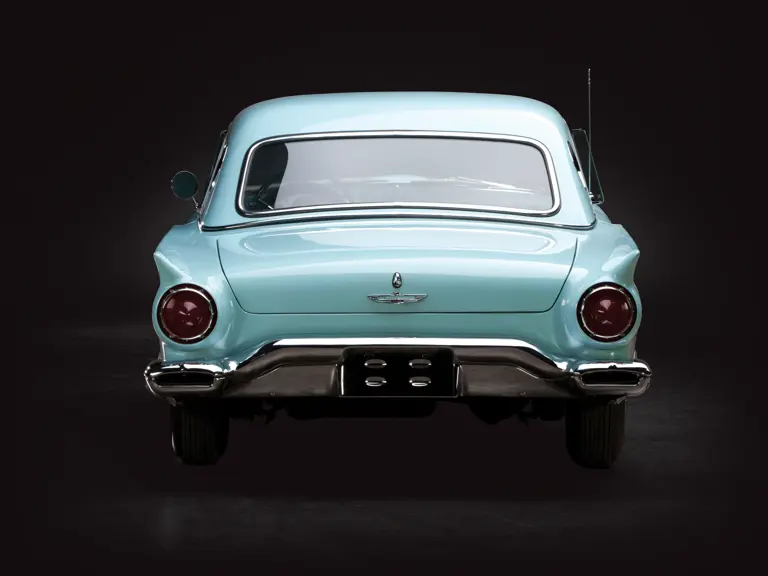
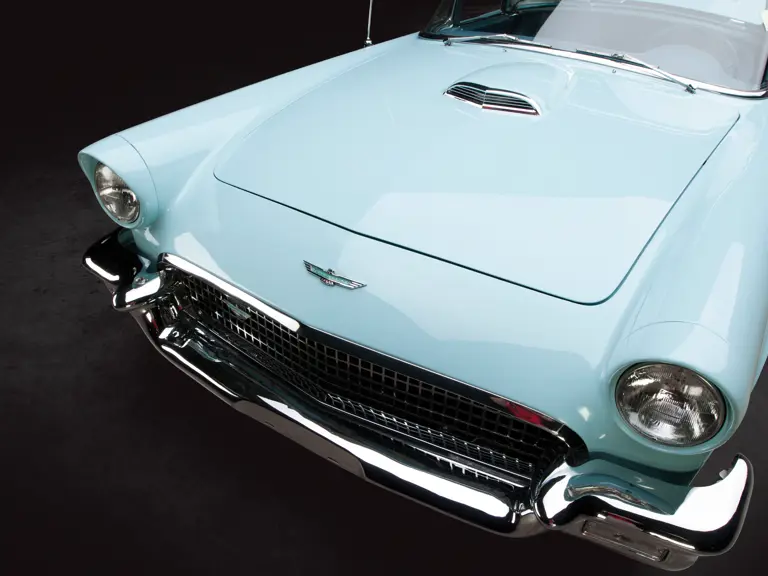
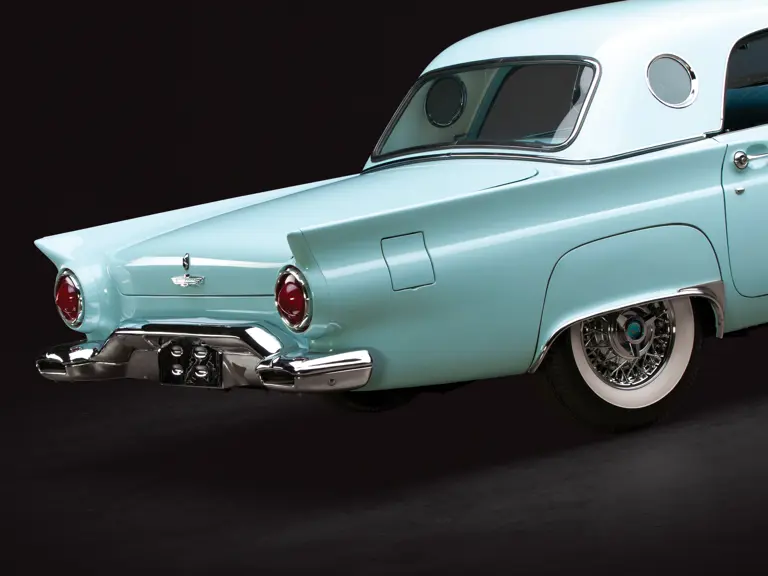
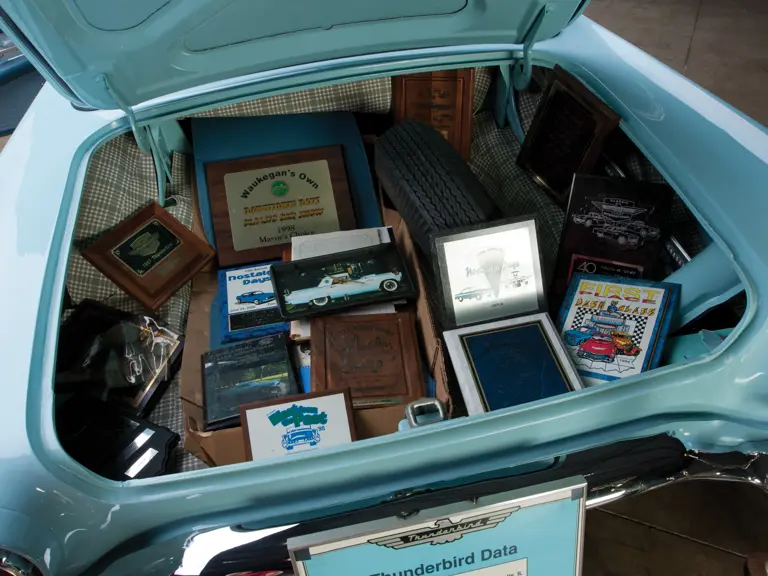

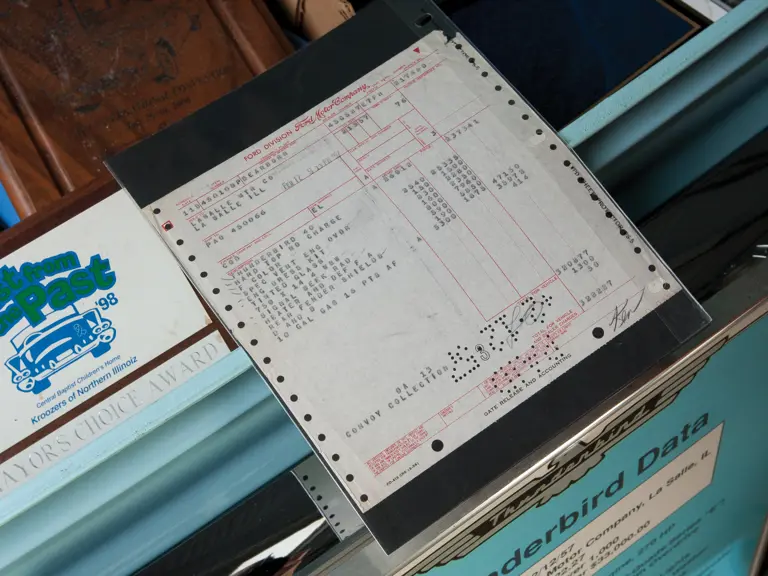
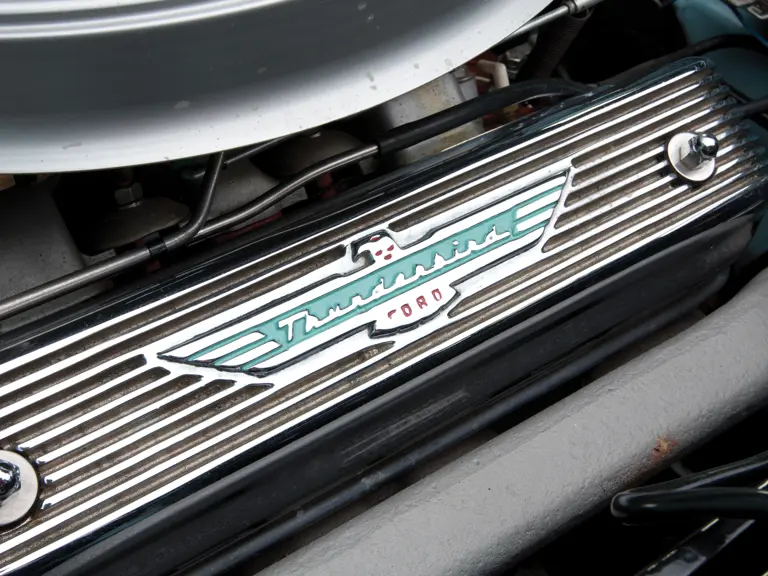


 | Farmer's Branch, Texas
| Farmer's Branch, Texas
